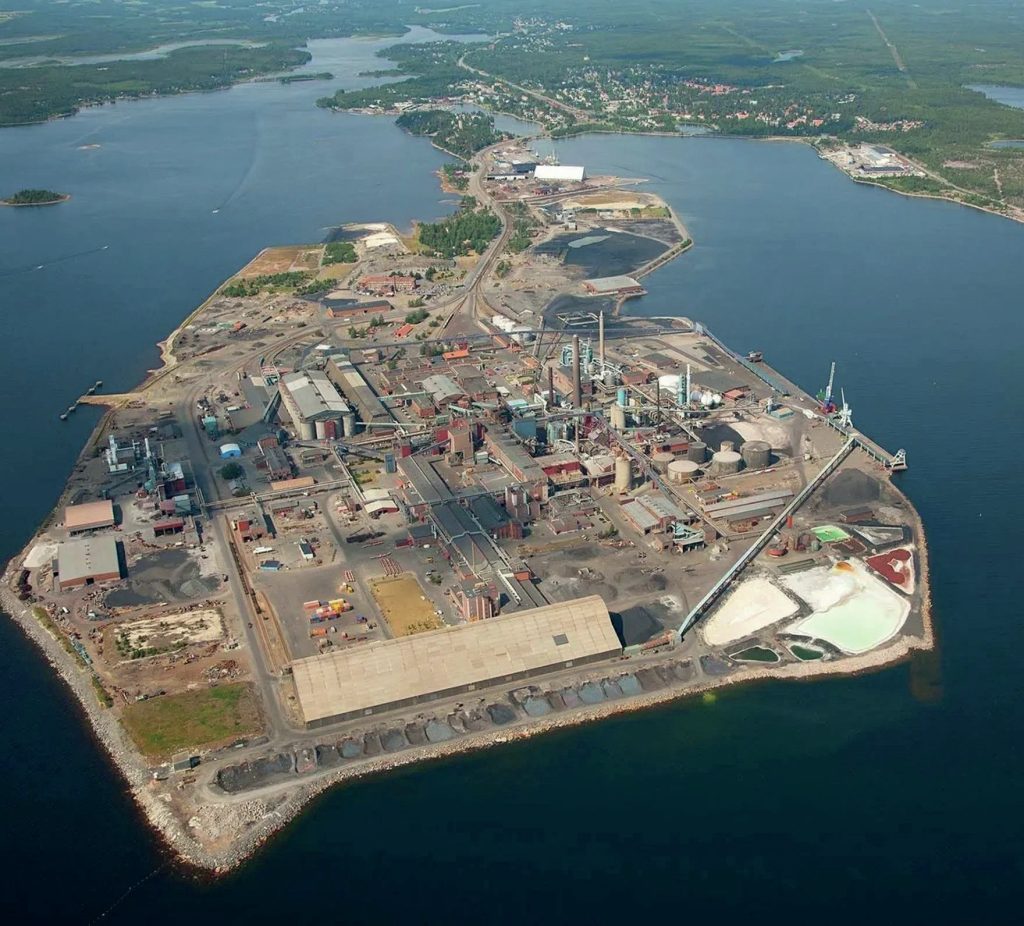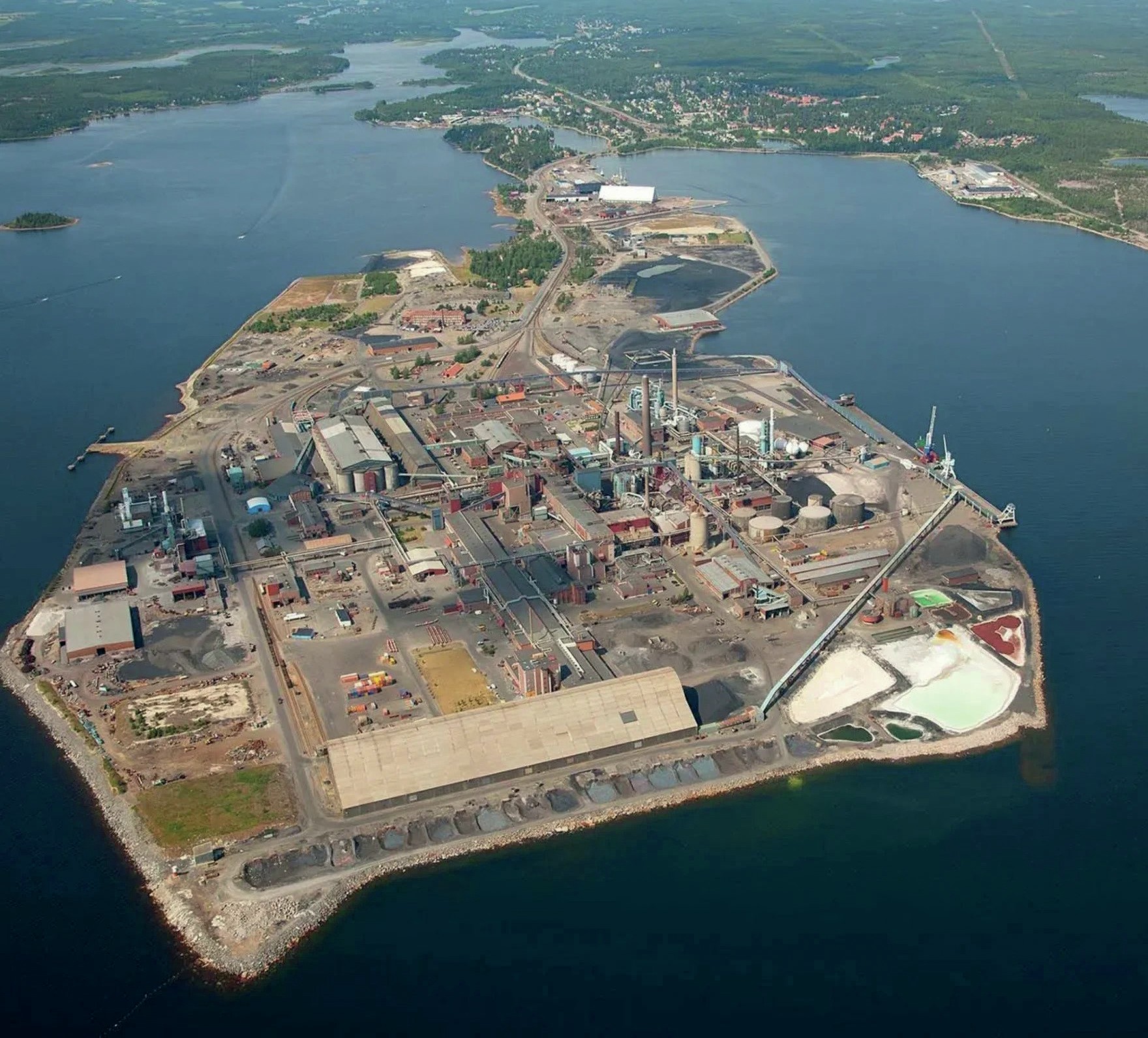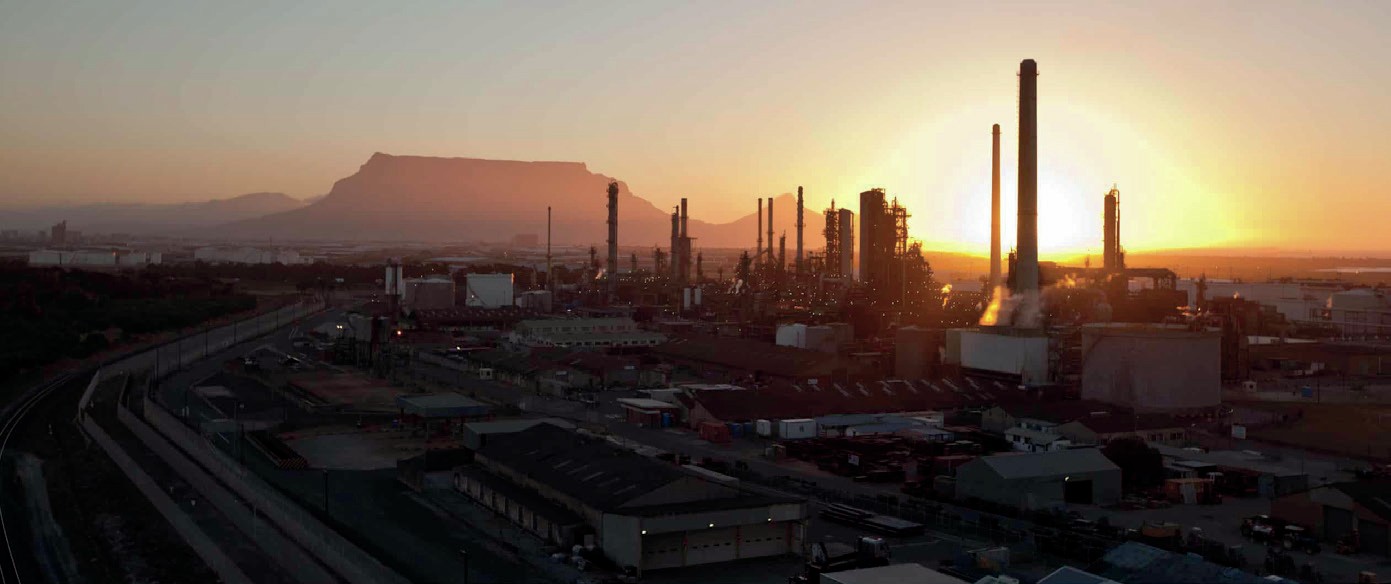Sulphur 406 May-Jun 2023

31 May 2023
Sulphuric Acid News Roundup
Sulphuric Acid News
AUSTRALIA
Worley Chemetics to supply sulphuric acid technology
Worley has been awarded a contract to supply Chemetics’ CORESO2™ technology for a sulphuric acid plant and associated oxygen unit at the Arafura Rare Earths project, sited 135 km north of Alice Springs in Australia’s Northern Territory. A greenfield mine will extract and process neodymium and praseodymium to create ultra-strong permanent magnets for a range of applications, such as household electronics and high-performance motors for electric vehicles.
Worley says that the sulphuric acid plant will achieve significant sustainability improvements over similar capacity plants, thanks to its ability to idle while keeping the catalyst warm for extended periods of time, and high turnaround capability. It will be able to operate with 95% reduced sulphur dioxide (SO2 ) emissions, when compared to traditional double contact double absorption (DCDA) plants. The high-pressure steam production within the CORE-SO2™ process will further reduce greenhouse gas emissions by enabling the generation of CO2 -free electrical power. This will eliminate the need for a diesel or natural gas start-up burner. CORE-SO2™ is also 60% smaller than traditional sulphuric acid plants, leading to significant construction advantages; fewer pieces of equipment, and increased scope for modularisation. This minimises construction and assembly work for the remote mine site, leading to safer and more cost-effective project delivery.
“Arafura Rare Earths is very pleased to be working with Chemetics Inc as a global leader that is able to provide the Nolans Project with highly efficient, robustly engineered and low-emission sulphuric acid technology. This sulphuric acid plant represents a key component in achieving our sustainability goals,” said Stewart Watkins, General Manager Projects at Arafura.
INDIA
Larsen & Toubro to build phosphate plant
Vedanta Group has contracted Larsen & Toubro to engineer and build a 500,000 t/a fertilizer plant for Vedanta subsidiary Hindustan Zinc Ltd at Chanderiya, Rajasthan. The order includes setting up a 180,000 t/a phosphoric Acid Plant and a 510,000 t/a ammonium phosphate plant within the battery limits of the existing fertilizer complex.
Vedanta to carry out maintenance work at Sterlite
India’s Supreme Court has allowed Vedanta Ltd. to carry out maintenance work at its closed Sterlite Copper Plant located in Tamil Nadu’s Tuticorin. The order came after the company filed applications to ensure proper upkeep of the copper smelter, which was shut in 2018. The Supreme Court took evidence from a report by the High Powered Expert Committee and the recommendations of the Tamil Nadu State Government. In 2018, the Tamil Nadu Pollution Control Board (TNPCB) ordered the closure of the controversial Sterlite Plant after protests by locals and environmental activists who alleged that the facility was causing severe pollution.
DEMOCRATIC REPUBLIC OF CONGO
Production at Kamoa-Kakula up after debottlenecking
Ivanhoe Mines says that production at its Kamoa-Kakula copper complex in the DRC produced 93,603 tonnes of copper concentrate in 1Q of 2023, including a record breaking 34,915 tonnes in March. The Phase 1 and 2 concentrators are now operating at an increased processing rate of 9.2 million t/a, following completion of a $50 million debottlenecking programme. The programme was completed on-budget and ahead of schedule in late February, increasing production capacity up to 450,000 t/a of copper concentrate.
Ivanhoe Mines’ founder and executive co-chairman Robert Friedland commented: “The operating performance at Kamoa-Kakula continues to impress as the team focuses on optimising the concentrator plant following the successful completion of the Phase 1 and Phase 2 debottlenecking program, once again ahead of schedule and on budget, during the first quarter. We’re particularly excited about the improving trends in copper recovery, which saw the concentrator plants operating at recoveries as high as 90% in March… driving record production numbers into the end of the month. With the Phase 3 expansion well on track for 2024, Kamoa-Kakula represents a truly rare, high-margin growth story across the copper industry… As the rainy season in the Democratic Republic of Congo ends our geological team will also be ramping up exploration activities on Ivanhoe’s 90-100%owned Western Foreland Exploration Project next door, where we expect to drill around 75,000 metres this year. We’re looking forward to the many successes to come with our partners and shareholders in 2023 and beyond.”
Surface earthworks for Phase 3 concentrator plant and associated infrastructure well advanced, with first flotation cells delivered in March. The Phase 3 expansion will consist of two new underground mines known as Kamoa 1 and Kamoa 2, located approximately 10 km north of the existing Kakula underground mine and the Phase 1 and Phase 2 concentrators. A new, 5 million-t/a concentrator is under construction adjacent to the new Kamoa mines, which are also under development. Foundations have also been laid for the direct-to-blister furnace building, as part of the 500,000 t/a flash copper smelter. Ivanhoe says that construction of the smelter is 36% complete and proceeding on schedule. All smelter off-gas streams, including the acid plant tail gas, will be treated through the desulphurisation plant. The plant will produce 650-800,000 t/a of high-strength sulphuric acid, which will be sold domestically within the DRC copper belt.
GERMANY
Lead smelter reopens after sale
Metals company Nyrstar, owned by commodities group Trafigura, has reopened the Stolberg lead smelter in Germany. Stolberg, previously owned by Ecobat, was closed in 2021 after flooding in the west and south of the country and remained shut during its sale to Trafigura. The Stolberg plant largely supplies European battery producers with lead. It has the capacity to produce 155,000 t/a of lead, as well as more than 100 different types of lead alloys, and also can produce up to 130,000 t/a of sulphuric acid.
SWEDEN
Boliden scrap smelting returns to pre-covid levels
Boliden says that the Rönnskär smelter in northern Sweden recycled 83,000 t/a of electronic scrap in 2022, up 14% from 73,000 t/a the year before, and a return to pre-pandemic levels. Rönnskär is one of the most advanced copper smelters in the world, with most of its e-scrap feedstock coming from Europe. In addition to e-scrap, Boliden also processes lead-acid batteries and residuals from various industries. Overall, Boliden recycled about 321,500 t/a of recovered materials in 2022, down from 330,400 metric t/a in 2021. The recycled input rate in 2022 was 12%, the same as the year before. The facility recycled 160,000 t/a of secondary materials, down 5% from the year before. Of that total in 2022, scrap electronics made up 52%. In 2022, mined copper concentrate made up 82% of input, with recovered materials making up the remaining 18%. E-scrap’s portion of total inputs was 10%. According to the company’s most recent annual sustainability report, in 2022 the facility produced 218,000 t/a of copper, 12 t/a of gold, 467 t/a of silver, 2 t/a of palladium concentrate, and 550,000 t/as of sulphuric acid (up 4% on 2021).

CHINA
MECS awarded spent acid regeneration plant contract
Sinopec Zhenhai Refining and Chemical Co., Ltd, China’s largest integrated refining-chemical company, has awarded Elessent Clean Technologies subsidiaries MECS, Inc. and MECS Chemical Plants Equipment (Shanghai) Co., Ltd the contract for the license, design, engineering, and equipment provision for a spent sulphuric acid regeneration plant Sinopec’s petrochemical complex in Ningbo, Zhenhai province. The spent acid regeneration plant will be built in conjunction with Sinopec’s planned expansion of its sulphuric acid alkylation and acrylonitrile facilities at the Ningbo site.
The growing use of sulphuric acid alkylation by refineries and increased production of spent sulphuric acid from chemical plants necessitates additional processing of the spent acid. MECS says that its dry gas sulphuric acid regeneration (SAR) technology offers acid producers an effective solution that supports the production of very high quality alkylate, while ensuring consistent on-stream time with limited maintenance requirements.
Eli Ben-Shoshan, CEO, Elessent, said, “We are honoured to play a role in a project that provides our customer, Sinopec Zhenhai, with a means to strengthen sustainability in the region. Our sulphuric acid regeneration technology allows Sinopec to keep sulfuric acid in circulation for as long as possible. This provides great value for our customer and allows them to incorporate another measure of sustainability into their refining operation.”
FINLAND
Eurobattery increases stake in nickel cobalt project
Mining company Eurobattery Minerals AB has exercised its option to acquire 30% of the shares in FinnCobalt Oy, which is developing the Hautalampi nickel, cobalt and copper project. This is the company’s second acquisition within the scope of its contracted right to acquire 100% of project out to May 2024. The current acquisition takes Eurobattery’s share of FinnCobalt to 70%, making it the majority owner and bringing the right to nominate a chairman of the board and two ordinary board members and their deputies. The acquisition is expected to be completed during 2Q 2023.
The Hautalampi project is located near Outokumpu, near the famous Keretti mine where approximately 28.5 million tonnes of rock with a copper content of 3.8% were mined between 1912-1989. The project consists of one mining concession covering 227 hectares. On 20 March 2023, the company published a preliminary feasibility study for the Hautalampi project which put proven and probable mineral reserves at 4.56 million tonnes of sulphide deposits, grading 0.30% nickel, 0.24% copper, and 0.08% cobalt. Ore processing will include crushing, grinding, metal flotation circuits to produce concentrate and a sulphur removal flotation circuit, followed by sulphuric acid leaching.
“We are very pleased to continue to deliver on our strategy to provide battery minerals from Europe to Europe, now as the majority owner of the Hautalampi mine project. With the pre-feasibility study just announced we know that the economic outlook for the battery mineral mine in Finland is strong,” said Roberto García Martínez, CEO of Eurobattery Minerals.
MOROCCO
OCP to ‘solarise’ phosphate production
The International Finance Corporation (IFC) says that it is providing a e100 million loan to OCP Group to support the construction of four solar photovoltaic plants to power the group’s operations in Morocco. OCP intends to use solar power to reduce production costs and the carbon footprint of its operations in Morocco. The solar PV facilities will have a combined capacity of 202 MW, and will be built near the mining towns of Benguerir in the Rehamna region and Khouribga, 120 km southeast of the economic capital Casablanca.
“Obtaining this loan is a testament to the partnership we are building with the IFC and the alignment of our institutions as we simultaneously tackle the global challenges of food security and climate change,” explains Mostafa Terrab, OCP Group’s chairman and CEO.
As part of this strategy, the group launched a new company in 2022 to guide its energy transition; OCP Green Energy, which will manage the solar array. OCP says that its renewable energy strategy is expected to avoid emissions of 285,000 t/a of carbon dioxide equivalent (CO2).
CHILE

Antofagasta output up slightly after poor 4Q
Antofagasta plc says that 1Q 2023 copper production for 2023 was 145,900 tonnes, 5.1% higher than the same period in 2022, but 25% lower than the 195,700 tonnes produced in the fourth quarter of 2022. The 4Q 2022 decline was due to a temporary reduction in throughput at Los Pelambres due to lower water availability, and lower grades and scheduled maintenance at Centinela, according to Antofogasta. However, in a statement it said that it expected copper production to improve throughout the rest of 2023, with annual copper production guidance figures put at 670-710,000 t/a, and capital expenditure $1.9 billion.



